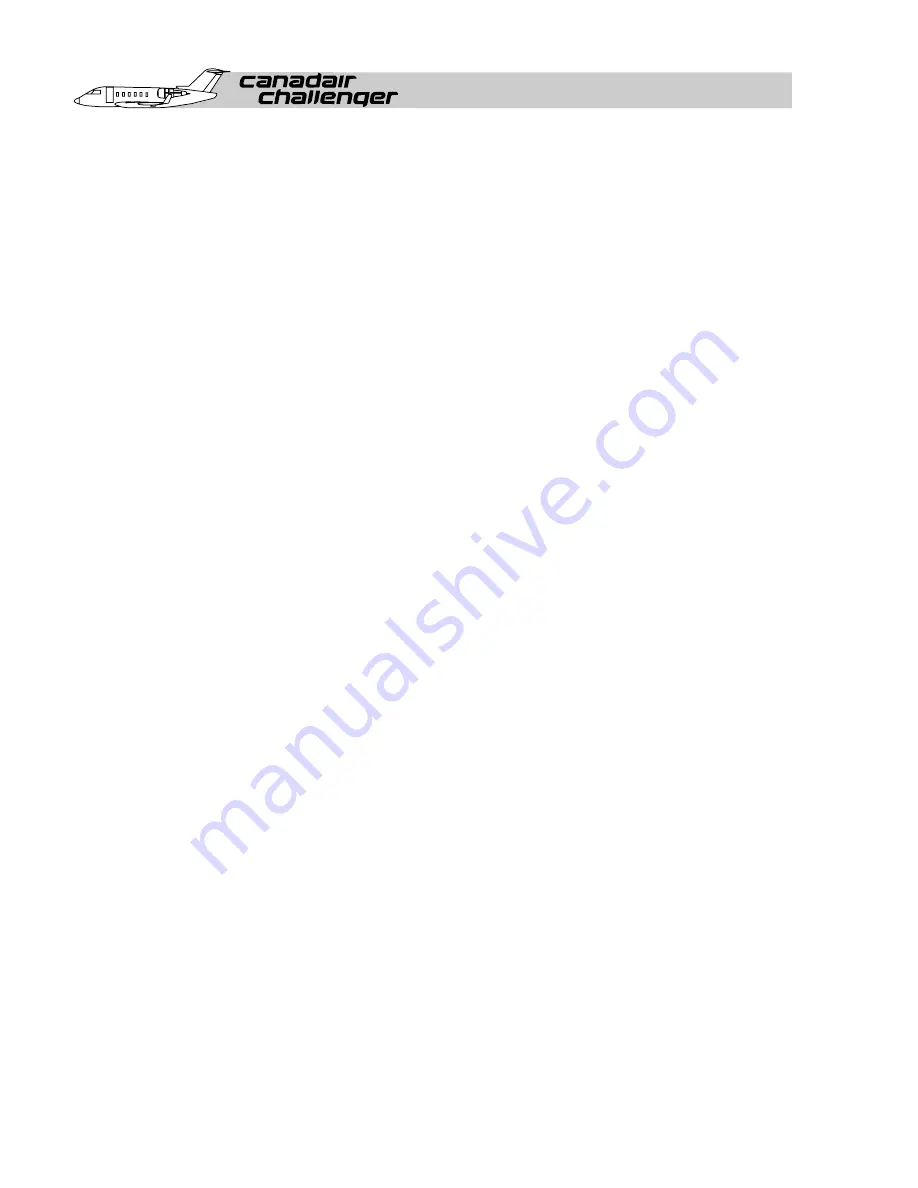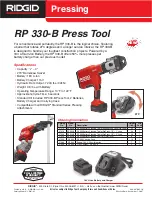
Override controls are incorporated into the
outflow valves, which will provide for:
• Overpressure limiting, which limits the
maximum cabin differential pressure to
9.1 ±0.1 psi, regardless of the selector
setting
• Altitude limiting, which prevents the
cabin altitude from exceeding 12,500
±500 feet
• Negative pressure relief, which prevents
ambient pressure from exceeding cabin
pressure (negative pressure) by more
than -0.5 psid
HYDRAULIC POWER SYSTEMS
The Challenger has three independent hy-
draulic systems which are designated “No.
1,” “No. 2,” and “No. 3.” These systems pro-
vide hydraulic power to operate the primary
flight controls, flight and ground spoilers,
landing gear, nosewheel steering, and the
wheel brakes. All systems operate at a work-
ing pressure of 3,000 psi.
Each system contains its own reservoir and op-
erates continuously to supply operating pres-
sure to its respective subsystems.
System No. 1 is pressurized by the left engine-
driven hydraulic pump and/or by an AC elec-
tric pump (designated pump “1B”) located on
the left side of the aft equipment bay.
System No. 2 is similar and is pressurized by
the right engine-driven hydraulic pump and/or
by an AC electric pump (designated pump
“2B”) located on the right side of the aft
equipment bay.
System No. 3 is pressurized by two AC elec-
tric pumps, designated pump “3A” and pump
“3B,” which are located in the rear wing root
on each side of the airplane.
The hydraulic system control panel, located
overhead in the cockpit, provides the pilots
with the switches, lights, and gauges for sys-
tem management.
LANDING GEAR AND BRAKES
The Challenger employs three retractable land-
ing gear assemblies, each fitted with dual
wheels and an oleopneumatic shock strut.
The main landing gear retracts inward into
recesses in the wing and center fuselage. The
nose landing gear retracts forward. Normal
extension and retraction is electrically con-
trolled and hydraulically operated. For emer-
gency landing gear operation, the gear may be
extended by pulling the landing gear manual
release T-handle in the flight compartment.
The pilot’s handwheel provides 55° nose-
wheel steering each side of center through
hydraulic actuators or, with hydraulic pressure
removed, the airplane can be turned using
differential braking.
Each main wheel contains a hydraulic multi-
disc brake unit. The inboard brakes are pow-
ered by the No. 3 system, and the outboard
brakes by the No. 2 system. Nitrogen-charged
brake accumulators provide limited braking
pressure if one of the hydraulic systems is not
available. A parking brake handle can be set
to maintain pressure to the brake units.
An antiskid system independently modulates
the hydraulic pressure to each brake to give op-
timum braking performance under all condi-
tions. The system incorporates locked wheel
protection, touchdown protection, and a built-
in test function.
FLIGHT CONTROLS
Hydraulic power is used to operate the ailerons,
elevators, and rudder (the primary flight con-
trols.) Both flight and ground spoilers are also
hydraulically operated. Trailing-edge flaps are
electrically controlled and actuated. The trim
controls are actuated from pilot input switches
and autopilot input signals through electri-
cally driven actuators. Stall protection includes
1-18
CL 601-3A/R
FOR TRAINING PURPOSES ONLY
FlightSafety Canada
L t é e
L t d .
CL-600-2B16 PILOT TRAINING MANUAL
















































